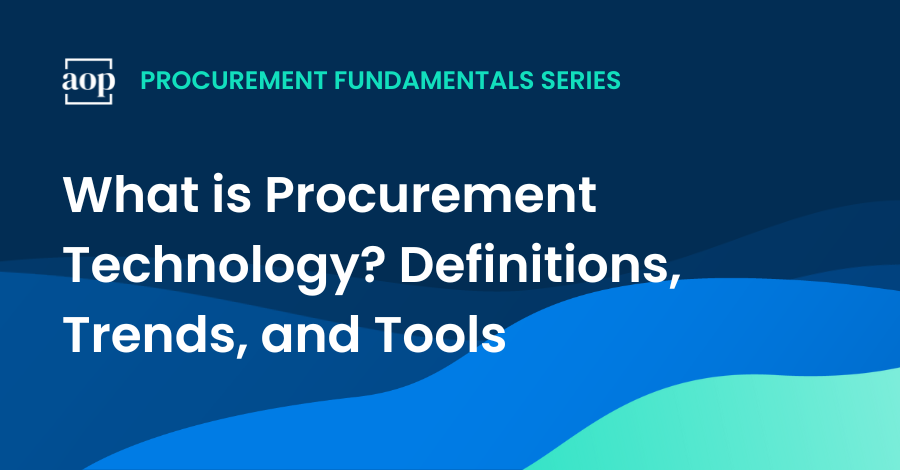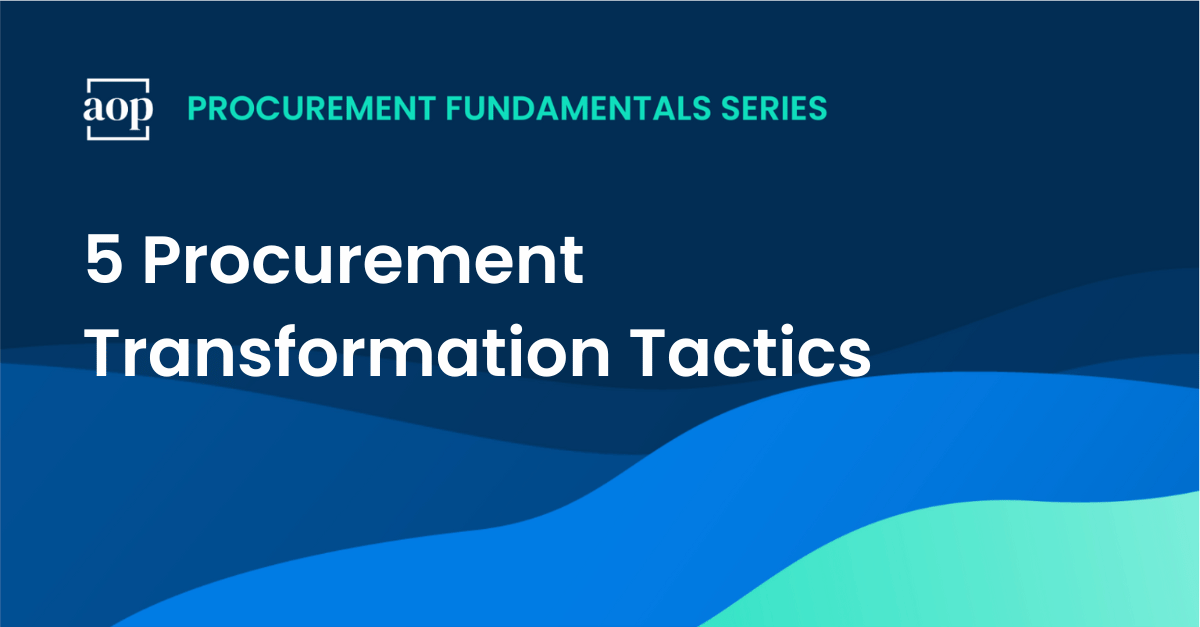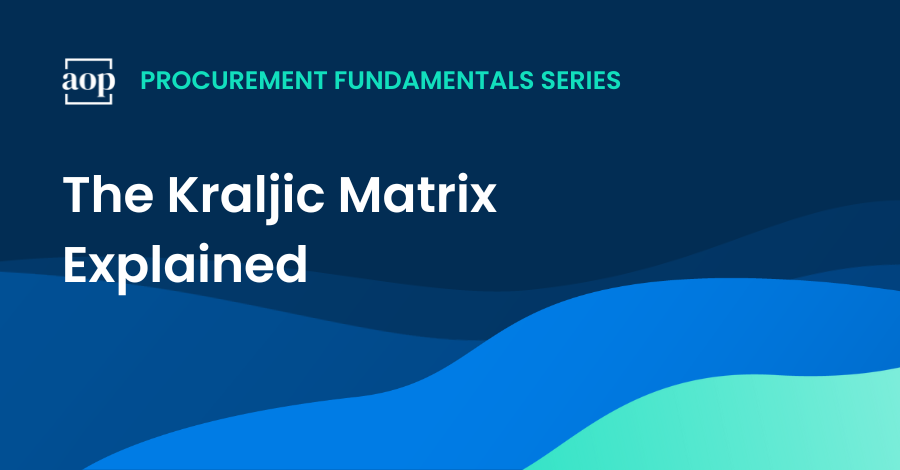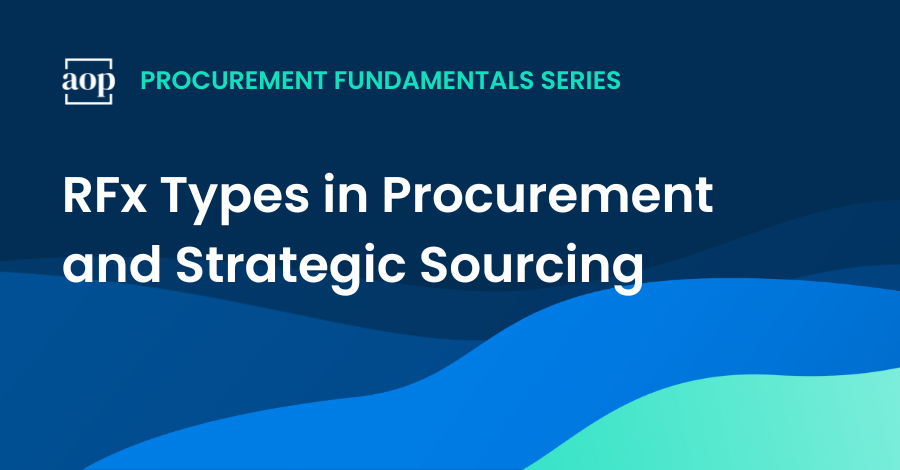6 min read
What is Procurement Technology? The Definitions, Trends, and Tools you Should Know
Philip Ideson : August 14, 2024

If you work in procurement, it’s hard to avoid the topic of technology. Most procurement organizations have gone through decade-long digitalization initiatives, but technology-related topics remain high on the agenda of most CPOs and procurement leaders.
As you form your own views on procurement technology, it’s useful to go through some fundamentals. Let’s review some key definitions, trends, and tools you need to know.
What exactly is procurement technology?
Procurement technology refers to any digital tools, software platforms, or IT systems that streamline, automate, or support procurement processes or tasks. These technologies can enable various procurement activities, such as strategic sourcing, category management or supplier performance management.

The need for procurement-specific technology is constantly growing as more procurement operations are digitized. Emergen Research estimates that the global procurement software market was worth $6.67 Billion in 2022 and expects the market size to grow to $17.90 Billion by 2032.
Procurement technology is a key enabler for modernizing business operations. When implemented effectively, procurement technology helps you achieve greater efficiency, cost savings, and improved compliance across increasingly complex global procurement operations.
Is there a difference between procurement tools and procurement technology?
Procurement tools and procurement technology, while closely related, are not exactly the same thing. Procurement tools are digital solutions designed to address particular tasks within the procurement process, such as e-sourcing, spend analysis, or contract management.
Procurement tools also include self-built digital solutions that aid the work of a procurement organization. A spend cube created using Microsoft Excel and Power BI can be considered a procurement tool, but not a procurement technology.
In contrast, procurement technology is a broader concept that encompasses all digital systems created to support procurement, including procurement applications and software platforms. In essence, procurement technology refers to the entire ecosystem of digital solutions created exclusively to improve the performance of procurement professionals and teams. Procurement technology is often abbreviated as “ProcureTech” and can include a number of emerging technological innovations like AI, blockchain, and IoT.
The legacy of E-procurement solutions
Sometimes procurement technology is also referred to with the term “e-procurement.” This term became popular in the early 2000s as more cloud-based software suites were introduced to support key procure-to-pay and source-to-contract functions.
E-procurement usually refers to online solutions that facilitate or automate the purchasing process from requisitions to payments. The typical advantage of e-procurement solutions is their ability to handle high volumes of tasks and activities in a shared service or outsourced business operation. They let you create purchase orders, approve requests, and manage invoices electronically, reducing manual intervention and errors. E-procurement systems can also give visibility into the procurement process, ensuring compliance and control over managed spend.
The term “E-procurement” is losing popularity. According to Google Trends, searches for “e-procurement” have declined globally by 23% over the past two years.
Key categories of procurement technology
One way to look at the ever-growing global procurement technology landscape is through categories of tasks to be done. Here are examples of job-specific tools and software solutions.
- Category Specific Tools: Solutions tailored for managing direct or indirect procurement categories such as office supplies, marketing services, and IT services,.
- Contingent Workforce & SOW Services: Solutions for managing contingent labor and statement of work (SOW) services, including vendor management systems (VMS) and platforms for hiring, tracking, and managing temporary or project-based workers.
- Contract Lifecycle Management: Software for automating and managing the entire contract lifecycle, from creation and negotiation to execution and renewal, ensuring compliance and risk mitigation.
- Data Foundation: Platforms and tools that provide data infrastructure, enabling effective (master) data management, third party data integration, and analytics to support procurement decisions.
- Direct Materials: Solutions focused on the procurement of direct materials used in production, including tools for managing suppliers, inventory, bill of materials (BOM) management, and order processing for raw materials and components.
- ESG (Environmental, Social, and Governance): Tools and platforms that help organizations manage and report on their ESG initiatives, ensuring sustainable and ethical procurement practices.
- GPO (Group Purchasing Organization): Platforms that facilitate group purchasing to leverage collective buying power for better pricing and terms from suppliers.
- Intake Management: Solutions for managing procurement requests from within an organization, streamlining the intake process and ensuring proper approval workflows.
- Procurement Orchestration: Platforms that integrate and coordinate various procurement activities and tools, providing a centralized approach to managing the entire procurement process.
- Risk Management: Solutions designed to identify, assess, and mitigate risks in the supply chain and procurement process, ensuring business continuity and compliance.
- Sourcing: Tools and platforms that facilitate the sourcing process, including supplier discovery, RFP/RFQ management, and competitive bidding.
- Spend Analytics: Software that analyzes procurement data to provide insights into spending patterns, helping organizations identify cost-saving opportunities and improve budgeting.
- Spend Management Suites: Comprehensive platforms that provide end-to-end spend management capabilities, integrating various tools for procurement, invoicing, and payment processing.
- Supply Market Intelligence: Tools that offer insights and data on market conditions, supplier performance, and industry trends to support strategic sourcing and procurement decisions.
- Technology Implementation: Services and tools that assist organizations in implementing and integrating new procurement technologies.
It’s likely that the number of categories of procurement technology and services will grow over time as new innovations and trends transform the way we do procurement in the future.
Three recent trends in procurement technology
Art of Procurement has identified hundreds of different procurement technology trends as we’ve spoken to procurement leaders around the world about the key challenges and opportunities transforming the procurement function.
Three key trends stand out as having a major impact on the future of procurement technology.
1. Artificial Intelligence (AI) and Machine Learning (ML)
Artificial intelligence is one of the most talked about technology trends in procurement. While there are still some doubts about the long-term impact on procurement operations, machine learning is already in broad use in areas like spend classification (in spend analysis solutions) and supply risk management.
2. Cloud-based data and applications
Another long-term trend is that more procurement technology is moving “to the cloud.” In other words, the data and applications accessed by procurement teams are hosted online in cloud-based IT systems and data warehouses. Cloud-based apps allow procurement teams to access procurement tools and data from anywhere in the world, facilitating more remote work and collaboration across global teams and external partners. Another advantage of cloud-based apps is their ability to adapt quickly to changing business needs and integrate with third party data sources and services.
3. Full Suite vs. Best-of-Breed
A third major trend in procurement technology is whether procurement teams are better served by one end-to-end “full suite” procurement tech solution, or an ecosystem of best-of-breed point solutions. If you ask 30 CPOs you’re likely to get 30 different opinions with good arguments on both sides of the debate. Most procurement organizations today fulfill their technology needs with a mix between a core platform for S2C, P2P and/or S2P and complementary tools for specific tasks or needs.
These are just three examples of key trends impacting procurement technology. To keep up with more trends, you should subscribe to new episodes of the Art of Procurement Podcast.
Procurement suites, ERP add-ons and Point-solutions
Another key thing to note is that the procurement technology landscape is not homogeneous or clearly defined. It’s not uncommon for a procurement technology provider to specialize in more than one category of solutions. There are also many software providers that include a large professional service element in addition to a technology solution.
One of the most common ways to categorize procurement technology is between ERP-linked modules, procurement suites, and point solutions.
Procurement modules in ERP systems
The procurement-focused modules of popular ERP systems such as SAP Ariba or Oracle Procurement Cloud are the most used forms of procurement technology today. ERP-linked modules are designed to streamline and automate the procurement process within the broader context of business operations. These modules offer functionality such as purchase order creation, supplier management, inventory control, invoice processing, and spend analysis. By being part of an ERP system, these procurement modules can ensure consistent data flow and coordination between procurement and other business functions like finance, supply chain, and production.
Procurement suites
Procurement suites are comprehensive, integrated platforms designed to cover the entire procurement lifecycle, or in some cases interrelated Procure-to-Pay or Source-to-Contract process steps. They can include a wide range of functionalities within a single system, including sourcing, contract management, supplier management, procure-to-pay (P2P) automation, and spend analysis. One advantage of procurement suites is their ability to offer a unified experience across the most common procurement team tasks, reducing the need for multiple systems and data systems. Many of the suites also offer data integration and workflow management across procurement activities within popular ERP systems or third party services.
Point solutions
Point solutions are specialized tools that focus on a specific area of procurement. These tools are designed to perform particular functions exceptionally well, such as spend analysis, e-Auctions, or contract lifecycle management. While point solutions typically offer more configurability and specialized features, they may also require more integration with other systems or workflows.
Which type of procurement technology to choose?
Art of Procurement don’t offer subjective rankings of different technology providers. The reality is that most procurement professionals will come across a large number of different tools and solutions during their career, and the unique needs of every business will be different. This creates the opportunity for a broad, deep market of solution providers, each with a different value proposition.






